Going into the woods to look for deer is an exciting adventure. It’s peaceful, quiet, and full of surprises.
The big question is, “how often do you see deer when hunting?”
Out in the woods, every bit of deer sign tells a story.
Hunters, whether they are beginners or experts, often wonder how often they will see a deer. Seeing a deer can be a heart-stopping moment. It’s the moment we are all waiting for.
In this article, we will explore the stories and strategies of different hunters.
We will learn about the signs that deer leave behind. From the hot fall to the cold winter, every season tells a different story about deer hunting.
Let’s go on this journey together, learning and exploring the wonderful world of hunting deer in the wild.
Factors Influencing Deer Sightings
Every deer hunter sets out with the goal of seeing lots of deer.
But sometimes, seeing deer can feel like a bit of a mystery. Let’s talk about what makes it easy or hard to see deer when we are out hunting.
Seasons Change Deer Movement
Each season intertwines with the deer’s behavioral patterns, influencing our potential sightings and interactions with them.
Think about a forest in fall. The leaves are all colors and they crunch under our boots.
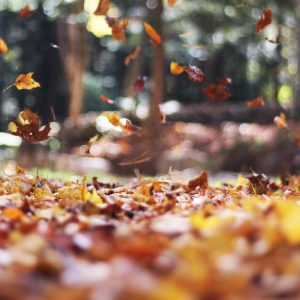
Deer are much more active during early season, navigating through the woods with a purpose, as they search for food to prepare for the winter months.
But during winter, temperatures drop and deer become more concerned with conserving their energy so in general you will see deer moving less.
Your hunting season is almost surely during the fall or winter so plan accordingly.
Other Hunters Can Change Things
Deer are remarkably adept at sensing the presence of hunters.
In areas saturated with hunting activity, deer may instinctively avoid the area in order to evade potential threats.
This can be especially bad on opening day.
They can smell, hear, and see hunters too. So, if we go where there is less hunting pressure, we might see more deer.
Time of Day Matters
Early in the morning and late in the evening, deer feed and go about their day.
Deer much prefer the quiet dawn and dusk parts of the day.
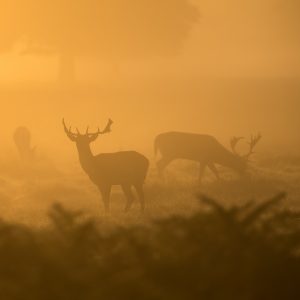
During the middle of the day (daylight hours) deer bed down and rest.
If we are trying to improve our chances at seeing more deer, dawn and dusk are the main times of day we need to be out hunting.
Personally, I have seen far more deer during the twilight hours than any other time of day. Late afternoon is when I like to start my evening hunts.
Weather Plays a Part
Weather patterns undeniably affect the behavior and movement of deer.
When it rains lightly, deer might move around more because the forest is quiet and smells are hidden. But, if it’s foggy or stormy and windy, deer might hide because it’s hard for them to hear or smell danger.
Many also swear that the moon phase affects how deer move, especially older bucks.
In the end, hunting is like a big puzzle. We put pieces together to understand when and where we might see deer.
It’s a learning journey. We watch, we think, and we always find something new in the peaceful woods.
Strategies You Can Use to See More Deer
In the big, open woods, finding mature bucks can be like a fun game of hide and seek.
But how can we get really good at this game?
Let’s talk about some cool strategies that can help us see deer more often when we are out hunting.
Moving Our Stands and Blinds
Many hunters use blinds to their advantage, and for good reason as it improves our chances.
But what if the deer know about our secret spot?
Maybe we need to move it! Trying new spots and outsmarting the deer can be exciting, especially if we start seeing more.
Looking for Fresh Sign
Even mature bucks leave little clues for us in the woods.
They might nibble on plants or leave footprints in the mud.
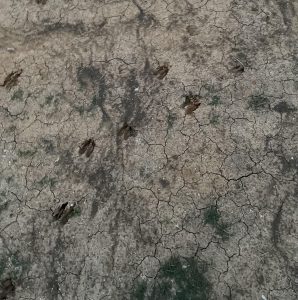
These clues, or “sign” tell us deer have been here.
If we find fresh sign, the deer are telling us exactly where they like to spend their time!
So, let’s keep our eyes open and look for these prime spots to hunt.
Understanding Deer Movements
Deer have their own paths and favorite spots to eat in the woods.
Learning these paths is like a secret cheat code, and can be even more helpful when hunting on your own property.
We can watch from a distance and see where they like to go.
If we pay close enough attention, we can improve our odds at seeing the most deer.
Trying Different Hunting Styles
Sometimes, being still and quiet in our blind is the best plan.
Other times, moving slowly and exploring the woods can be exciting.
This is called “still hunting.” It’s like being a detective, quietly searching for deer without them knowing.
Both ways can be fun and help us see more bucks (and does).
Moving our blind, looking for deer clues, learning their favorite paths, and trying new ways of hunting make the story exciting.
And remember, every time we go into the woods, we learn something new.
Just make sure you don’t stink.
Experiences of Various Hunters
As you are probably well aware, every hunter has a unique story to tell.
Each story is a mix of quiet moments, thrilling surprises, and lessons learned.
Here are some examples of stories I have heard from hunters throughout my life.
Seeing Deer Often: A Lucky Charm?
Some hunters just seem to have a lucky charm!
Almost every time they go into the woods, they spot a herd of deer.
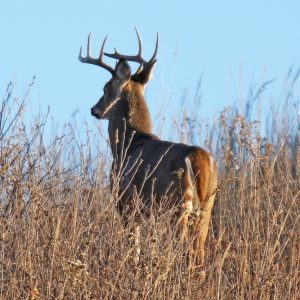
Is it luck or a secret strategy?
What it often turns out to be is patience.
They sit quietly, blend into the nature around them, and wait. Sometimes for hours!
And then, like magic, a deer appears, unaware of their presence.
The Rare Sightings
Other hunters just don’t see deer as often.
But for them, every sighting is that much more exciting. They enjoy the journey, the sounds of the birds, and the rustling leaves.
Being in the woods, exploring, and respecting nature is equally exciting. And when they do spot a deer, it is extremely rewarding.
Adapting and Learning
Many hunters tell a story of continuous learning.
They have days with no deer in sight and days where they spot several.
These hunters adapt, learn, and enjoy every hunt.
They try different spots, explore new woods, and always keep an open mind.
The Joy of Group Hunts
Finally, for many hunters the experience is about the time they get to spend with friends and loved ones.
They share experiences, stories, and sometimes, they see a deer together.
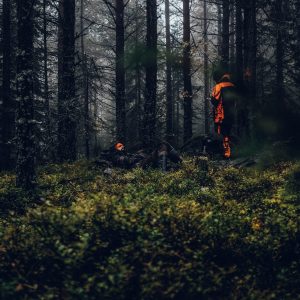
They learn from each other, share strategies, and at the end of the day, they have new tales to tell around the campfire.
In the world of hunting, every experience is unique and valuable.
Whether seeing a deer every time or cherishing the rare sightings, whether learning continuously or sharing the excitement with friends, every hunter writes their own story.
Wrapping Up
And so, our journey through the woods comes to a close. We’ve wandered through the tales of different hunters, explored various strategies, and peeked into the lives of the elusive deer.
Every step, every story, and every strategy we’ve discussed opens a new door to being more successful as a hunter.
When we are out hunting, every bit of deer sign tells a story. We must remember to be patient, and always strive to continue to learn and grow as hunters.
Whether we see a deer or simply enjoy our time in the woods, every hunting adventure is a blessing.
So, let’s cherish every moment, every sighting, and every lesson the woods share with us. Let’s continue to explore, respect, and learn from the wild, beautiful world of buck hunting.
FAQs
How Often Do Experienced Hunters See Deer?
Even experienced hunters have varied tales to tell!
Some might see deer almost every time they step into the woods, thanks to their tried-and-true strategies and spots.
Others might have days where the deer decide to play hide and seek really well. It’s a mix of strategy, knowledge, and a little dash of woodland magic!
What Are the Peak Times for Deer Movement?
Deer love the quiet times of the day. Early morning, when the world is just waking up, and late in the evening, when the sun takes a bow, deer feel safe to explore, eat, and play.
These times, dawn and dusk, are often called “golden hours,” and they are when we’re most likely to spot them in the woods.
Daytime deer activity can vary depending on many factors, far too many to list here.
How Does Weather Impact Deer Sighting?
Weather is like a mood ring for the woods!
On gentle rainy days, deer might roam freely, enjoying the soft sounds and hidden scents.
But, if it’s a big, loud storm, they might tuck themselves away in cozy spots, away from the noisy wind and rain.
So, weather can truly be a guide to when and where we might spot our deer friends.
What Are Common Mistakes Leading to Reduced Sighting?
Sometimes, hunters might choose spots that are too open, making them easy for deer to spot!
Or, they might ignore the little signs, like fresh tracks or other sign that deer leave behind.
Ignoring the wind direction or being too noisy are also common mistakes deer hunters make. Learning from these mistakes can greatly improve our chances.